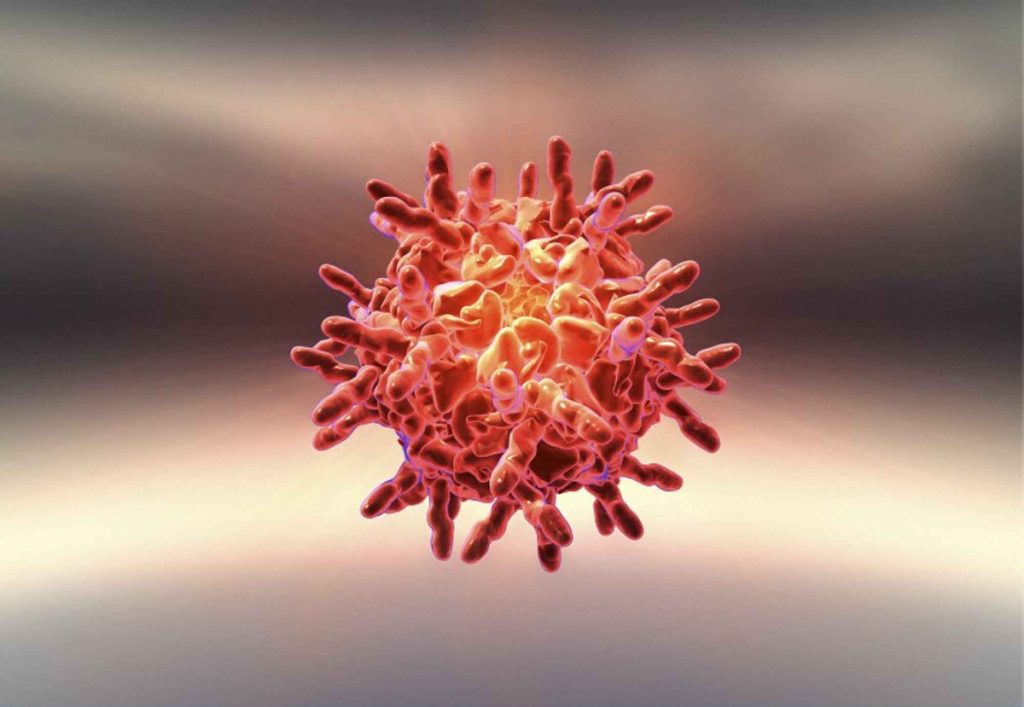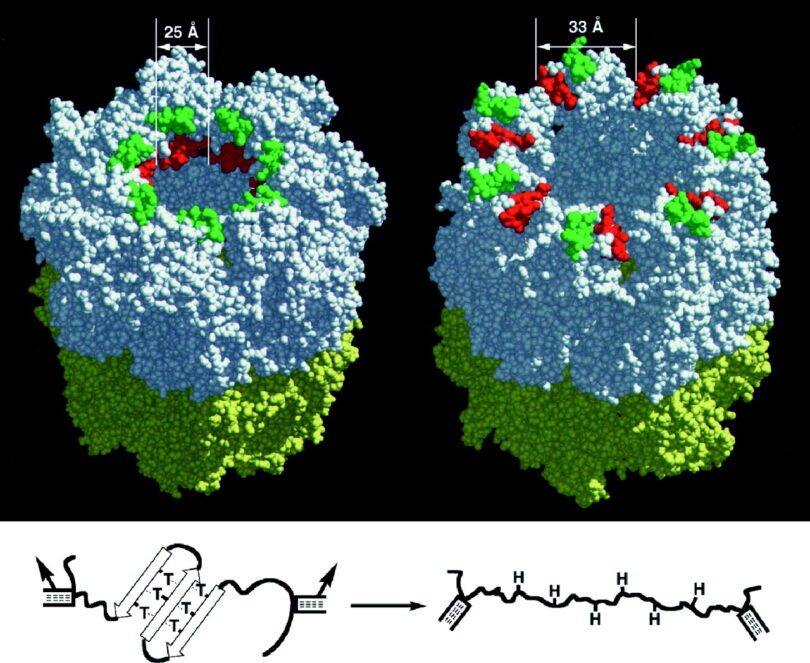Viruses are diverse, and biologists still find the various strains hard to classify, and harder to place on the tree of life. Many biologists reason that viruses might have originally been “free-living” organisms which later became the viral parasites they are today. This has been called the “Escape Theory.”
“…virulent systems are degenerative systems that have resulted from a loss of aboriginal genetic information.”
Meyer, Stephen C “Signature in the Cell” p. 491
Some viruses, such as the Polio, contain RNA, while others do not. Some unique viruses contain single-stranded DNA, while others, like smallpox, have double-stranded DNA. Many viruses do not contain any DNA at all, but they all contain fragments of genetic material.
Viruses are not cells but are bundles of lipid proteins with genetic material held inside membrane envelopes. Viruses all lack all the normal molecular machinery of the living cell such as ribosomes, ATP, organelles, cytoplasm, etc.
Are viruses dangerous and powerful living organisms that are flexing their Darwinian muscles, proving that evolution is true? Or, are viruses the same as they have always been since creation? Finally, are viruses the result of various damaged living organisms, all with degraded genetics?

University of Idaho microbiologist Scott Minnich believes he has identified enough evidence to show conclusively that viruses most likely resulted from degraded genetics. To illustrate, Minnich’s team researched the virus responsible for the mass death of 25 million people in the 14th century, called the Black Plague (Yersinia pseudotuberculosis). -1 They theorize that the havoc emerged due to the loss of genetic material derived from a more common non-lethal bacteria that lost genetic material. A single spontaneous mutation deleted a single genetic letter, which caused a virus to change. The virus cannot manufacture certain molecules and structures normally recognized by the human immune system, including flagellin. Minnich and his team confirmed this reality by correcting the genetic information in experiments which caused the virus to again be able to produce flagellin. This correction allowed the virus to return to its original non-degenerated and non-lethal form.-2

As another example: “The known strains of Ebola vary dramatically in their deadliness. (The) strain Ebola Reston doesn’t even make people sick. But (genetically degenerated strains) Ebola Bundiguyo had a death rate of up to 50% while the Sudan Ebola strain (further degenerated) killed up to 71% of the infected according to the World Health Organization.”
https://www.livescience.com/56598-deadliest-viruses-on-earth.html
Viruses may have emerged due to massive degenerative genetics in the past. There are many reasons to consider this possibility.
BAD DESIGN? One argument is the so-called “bad design” (dysteleological design), which points out that if a truly intelligent designer designed life, He would not intentionally create deadly things such as viruses because they are “bad.” Not all viruses are bad–most are good.
VIRUSES ARE MISSING RIBOSOMES. All viral strains do not contain ribosomes, the necessary molecular machinery for protein translation. -3 In extant cells, DNA translation is the only known method for building proteins, built inside ribosomes within living cells. This indicates that the original viruses would have likely had the various components of all other living cells at some point in the past, indicating genetic degradation.
VIRUSES DO NOT CREATE ATP. Viruses do not have any ability to maintain a metabolism apart from parasitically stealing it from a host because viruses cannot produce ATP. ATP is required for cellular energy and metabolism in all other living organisms.4 This indicates degradation of the original composition because viruses would not survive apart from a host.4
VIRUSES ARE VERY SMALL. Viruses are quite small compared to most living organisms and are not comprised of cells but protein bundles inside membrane envelopes.4 They are less than 200 nano-meters 3, while the average animal cell has a diameter over a thousand times larger.5 Being smaller does not alone tend to necessitate genetic degeneration; however, when this attribute is added to all the other abnormalities of viruses, being smaller does seem to fall in line with evidence of lost genetic information.
VIRUSES ONLY REPLICATE INSIDE HOST CELLS. All living extant cells contain DNA and can replicate using their own genetic information (DNA), but viruses do not all contain DNA. Viruses require a host in which to replicate.3 Whether this replication method is due to Design or Darwin, such evidence screams of genetic degradation due to such co-dependence on hosts for survival.
VIRUSES MUST HAVE EVOLVED AFTER HOST ORGANISMS. Another seeming paradox for Darwinian evolution to explain emerges as one considers viruses being hailed as the most “simple” living organism. The standard Darwinian position imagines simple living organisms gaining complexity over millions of years through the mechanisms of spontaneous mutations and natural selection (DNA allele function). This ‘chicken or the egg’ riddle asks: which came first, the virus or the host? The answer turns the “tree of life” upside down as the simpler virus evolves after the more complex organism.
THE MOST DANGEROUS VIRUSES ARE GENETICALLY DEGRADED. As stated earlier, many diseases can emerge when quite common viruses become genetically damaged (degraded). While Darwinists point to such mutating viruses as evolution in action, they are more accurately defined by clear degradative effects on genetic information. There is no argument here that these mutational effects are clearly the results of spontaneous errors, similar to how somatic cancers are another effect. This issue here is not the mechanism but the result of the mutations. More examples of genetically degraded viral diseases include The Black Plague 1, Malaria, HIV, smallpox, measles, Yellow fever, Ebola, and Zika Virus.6
VIRUSES ARE NOT CELLS BUT HAVE PROTEINS. As a clear indication of degradation in the past, viruses are not composed of cells and also do not contain ribosomes, which manufacture proteins (see above), yet inside viruses are bundles of proteins– how did these first ones emerge without the ability of translation within ribosomes among other vitally missing molecular machinery? How did viruses get proteins without any means to build proteins?
VIRUSES DO NOT HAVE NUCLEI, ORGANELLES, OR CYTOPLASM. Another clear indication of degradation is the many missing components found in living cells.4 Because viruses are not built by cells, they lack many material attributes, indicating potentially massive genetic degradation.
VIRUSES CANNOT MAINTAIN HOMEOSTASIS. All living things must maintain their environment to survive– every living thing by viruses.4 Viruses are alive, although completely dependent on another living host. At some point in the past, they must have had the ability to provide their own metabolism and environment. Presumably, viruses did not emerge inside a host but have devolved from more fully functional organisms.4

There is no shortage of arguments to support the concept that viruses are here likely due to genetic mistakes, deletions, and potentially biological catastrophes. Evidence indicates that viruses are not built by positive mutations but are remnants of damaged genetic material.
The Good
Suprisingly, many viruses are directly or indirectly beneficial to life. Only rarely are viruses harmful or deadly. Viruses can be used in nature to spread genetic information about incoming pathogens that can protect the population. Sometimes viruses can help provide herd immunity. Viruses play a role in life despite the distinction that they are not alive.
“Although some two hundred kinds of viruses are known to infect, sicken, or kill us…viruses…keep us alive. They form part of the body’s microbiome and safeguard our health. They can be harnessed to treat illness, deliver vaccines, and diagnose infections. They’re wielded as research tools to illuminate biology and disease and develop new drugs…viruses that count most in our lives are crucial not in disease but in health and in all aspects of life…”
“The Good that Viruses Do” The surprising and beneficial contributions that viruses bring to life; Harvard Medicine, Spring 2022; https://magazine.hms.harvard.edu/articles/good-viruses-do
SUMMARY
The concept of universal common ancestry evolution claims “simple” living organisms such as bacteria transformed into all living things, including humans, over many millions of years. Some theories reason that perhaps viruses were the precursors to the living cell. Do viruses empirically support this claim? No, not at all.
The first problem with viruses being good evidence for UCD is viruses are not alive. Based on the escape theory, viruses are genetic remnants (usually RNA) that escaped once fully functioning cellular life and must have produced it. Today viruses are rouge genetic debris.
The second problem is viruses are not alive. While many imagine that perhaps non-living viruses provided a bridge to the first living organism, such conclusions lack evidence and common sense. The genetic information must have formed within a living cell because, based on everything we know about biology, genetics only come from life.
The third problem is viruses are likely to break fragmented genetic material. Based on empirical evidence, viruses can only replicate (“survive”) once inside a living host. This logically means that a living host must predate the virus itself so it cannot be a bridge to life.
The fourth problem is mutation. Like everything that contains genetics, spontaneous mutations do occur. As we observe in nearly every conceivable case, these mutations are destructive. Mutations cause genetic entropy. Viruses lack DNA integrity with read-write protections from polymerase and other enzymes, which can cause runaway replication errors. This is precisely what we observe in viruses, they mutate rapidly–usually toward extinction.
All things considered, viruses are vastly poor examples of defending evolution. Ironically, viruses are excellent examples of devolution and genetic entropy as escaped rouge packets of broken genetic material.
1 “Black Death” Pandemic, Mideval Europe. https://www.britannica.com/event/Black-Death
2 Meyer, Stephen C “Signature in the Cell” p. 491
3 “Wessner, David, et. al. “The Origin of Viruses” Scitable by Nature Education; 2010 https://www.nature.com/scitable/topicpage/the-origins-of-viruses-14398218/
4 https://www.khanacademy.org/test-prep/mcat/cells/viruses/a/are-viruses-dead-or-alive
5 Guertin, David A.; Sabatini, David M. “Cell Size Control” http://sabatinilab.wi.mit.edu/Sabatini%20papers/Cell_Growth_REV_ELS-2006.pdf
6 https://www.livescience.com/56598-deadliest-viruses-on-earth.html
7- https://cosmosmagazine.com/science/biology/what-came-first-cells-or-viruses/;


